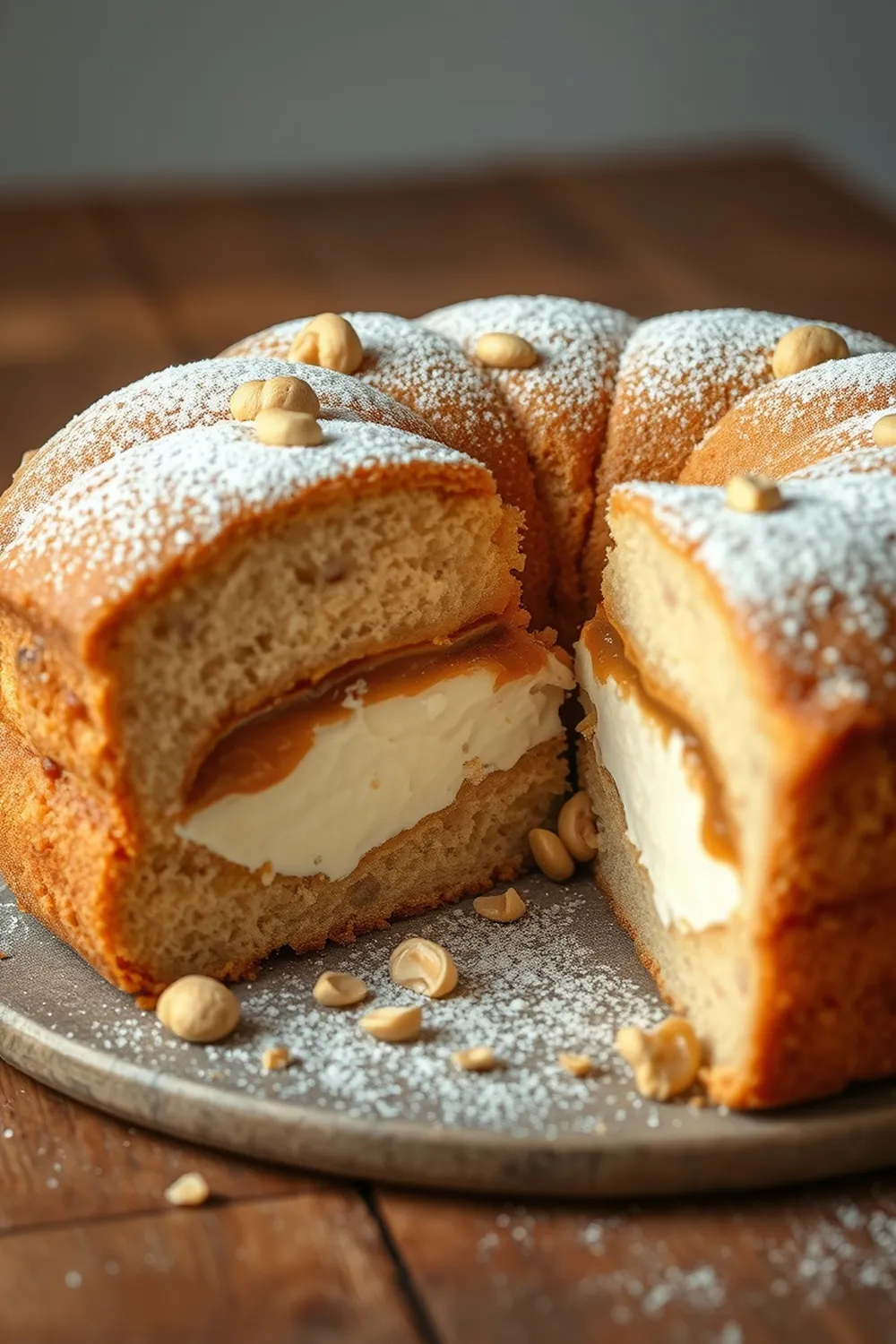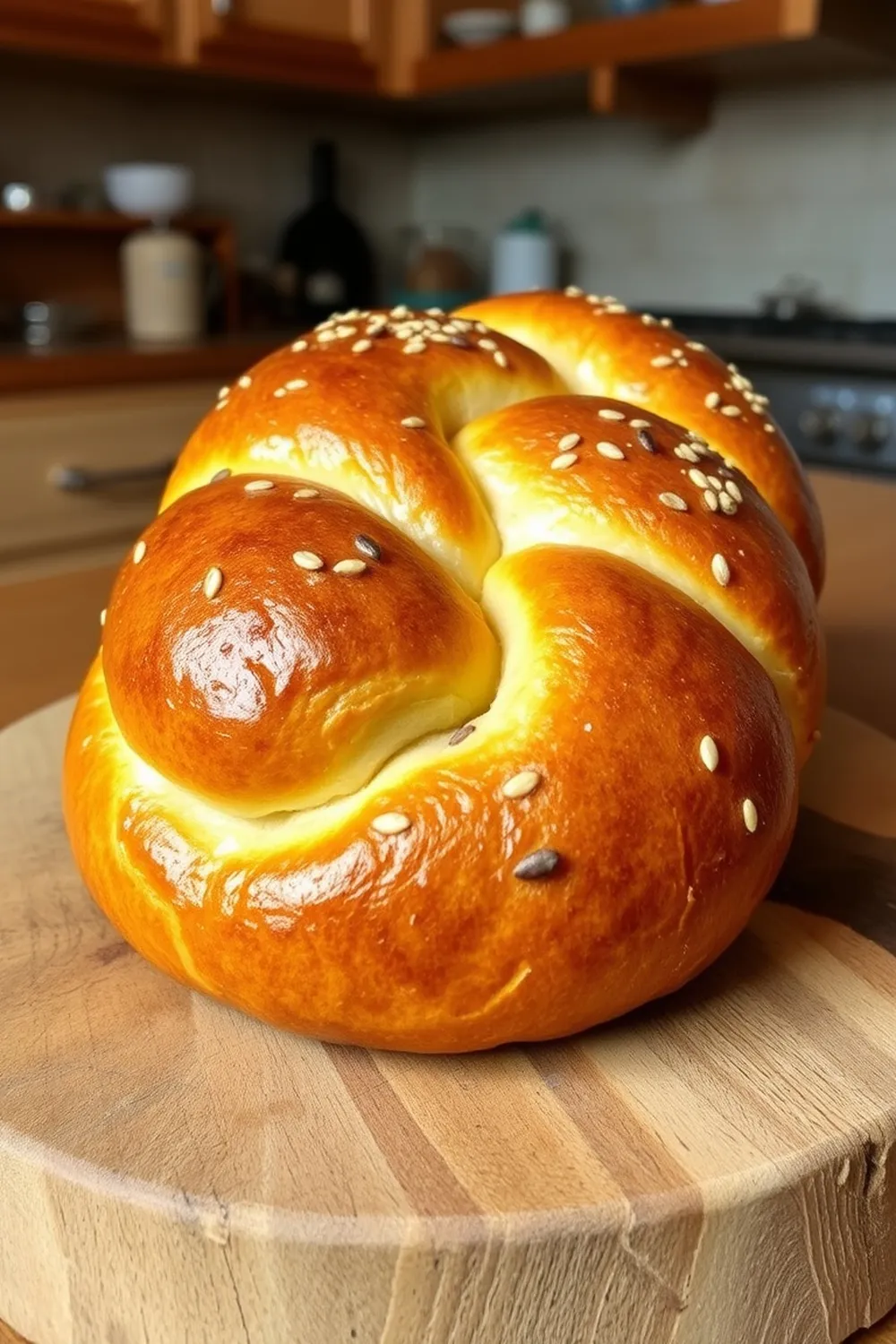- Activate yeast by mixing 1/4 cup warm water, 1 teaspoon sugar, and 2 1/4 teaspoons yeast. Let sit 5 minutes until foamy.
- Combine remaining 3/4 cup warm water, half the flour (approximately 2 1/2 cups), yeast mixture, and mix. Add remaining flour (approximately 2 1/2 cups), 1 1/2 teaspoons salt, and 1/4 cup softened butter.
- Knead dough with a mixer or by hand for 8-10 minutes until smooth and elastic. Shape into a ball.
- Let dough rise covered for 1-1.5 hours until doubled in size. Punch down to release air.
- Divide dough into two portions. Roll each into a 9x12-inch rectangle, fold into thirds, and place seam-side down in greased 9x5 inch loaf pans.
- Let dough rise again for 1 hour until puffed above pan edges.
- Preheat oven to 190°C (375°F). Bake loaves for 30-35 minutes until golden brown.
- Cool bread on a rack for 10-15 minutes before slicing. Store or freeze as needed.
- Calories:120 kcal25%
- Energy:502 kJ22%
- Protein:3 g28%
- Carbohydrates:22 mg40%
- Sugar:1 mg8%
- Salt:150 g25%
- Fat:2 g20%
Last Updated on 4 months by Neha Deshmukh
Easy Homemade Bread Recipe – Soft & Fluffy Loaf
Hey everyone! There’s just something so satisfying about the smell of freshly baked bread wafting through the house, isn’t there? I remember the first time I tried making bread – it felt a little daunting, honestly. But trust me, this recipe is a game-changer. It’s straightforward, forgiving, and results in the softest, fluffiest loaf you’ve ever tasted. Let’s get baking!
Why You’ll Love This Recipe
This isn’t your grandma’s complicated bread recipe (though, with all due respect to grandmas!). It’s designed for everyday bakers – even beginners. It delivers a classic, comforting loaf that’s perfect for toast, sandwiches, or just enjoying with a smear of butter. Plus, making your own bread is incredibly rewarding. You control the ingredients, and the aroma alone is worth the effort!
Ingredients
Here’s what you’ll need to create this deliciousness:
- 2.5 cups (600ml) warm water
- 1 tbsp (7g) active dry yeast
- 1 tbsp (12g) sugar
- 6-6.5 cups (720-812g) all-purpose flour
- 2 tsp (12g) salt
- 1/4 cup (57g) butter, softened
Ingredient Notes
Let’s talk ingredients for a sec – a few little things can make a big difference!
- Active Dry Yeast: This is the magic that makes your bread rise! Make sure your yeast isn’t expired. If it doesn’t foam up when you activate it, it’s time for a new batch.
- Flour Types for Texture: All-purpose flour works beautifully here, giving you a lovely soft crumb. You can experiment with bread flour for a chewier texture, but all-purpose is super reliable.
- Butter for Softness: Don’t skip the butter! It adds richness and keeps the bread incredibly soft. Make sure it’s properly softened – not melted – for the best results.
Step-By-Step Instructions
Alright, let’s get down to business!
- First, we’ll activate the yeast. In a large bowl, combine 2.5 cups of warm water, the sugar, and the yeast. Give it a gentle stir and let it sit for about 5 minutes, until it gets nice and foamy. This means the yeast is alive and kicking!
- Now, add the remaining water, half of the flour (about 3-3.25 cups), and the yeast mixture to the bowl. Mix it all together until it starts to come together.
- Add the remaining flour, salt, and the softened butter. Continue mixing until a dough forms.
- Time to knead! You can do this with a stand mixer fitted with a dough hook for about 8-10 minutes, or by hand on a lightly floured surface. You’re looking for a dough that’s smooth and elastic. It should spring back when you poke it gently. Shape the dough into a ball.
- Place the dough in a lightly oiled bowl, turning to coat. Cover it with plastic wrap or a clean kitchen towel and let it rise in a warm place for 1-1.5 hours, or until it has doubled in size.
- Once risen, gently punch down the dough to release the air.
- Divide the dough into two equal portions. Roll each portion into a 9×12-inch rectangle. Fold each rectangle into thirds like a letter, and place seam-side down into two greased loaf pans.
- Cover the loaf pans and let the dough rise again for another hour, or until it’s puffed up above the edges of the pans.
- Preheat your oven to 190°C (375°F). Bake the loaves for 30-35 minutes, or until they’re golden brown and sound hollow when tapped on the bottom.
- Let the bread cool on a wire rack for 10-15 minutes before slicing and enjoying!
Expert Tips
- Warm Water is Key: The water temperature is crucial for activating the yeast. It should be warm, but not hot – around 105-115°F (40-46°C) is ideal.
- Don’t Overknead: Overkneading can result in tough bread. Stop when the dough is smooth and elastic.
- Patience is a Virtue: Let the dough rise properly! This is where the magic happens.
Variations
Want to switch things up? Here are a few ideas:
- Vegan Adaptation: Substitute the butter with a plant-based butter alternative.
- Whole Wheat Variation: Replace up to half of the all-purpose flour with whole wheat flour for a nuttier flavor and added fiber. My friend, Priya, swears by this!
- Faster Rise Time: If you’re short on time, you can try a slightly warmer spot for rising, or even use the “warm oven” method (preheat oven to lowest setting for a few minutes, then turn off and place dough inside).
- Sweet Bread Adaptation: Add 2-3 tablespoons of sugar to the dough and a sprinkle of cinnamon for a delicious sweet bread. My kids love this one!
Serving Suggestions
This bread is incredibly versatile! Here are a few ideas:
- Classic toast with butter and jam
- Delicious sandwiches
- Served alongside a hearty soup or stew
- French toast for a special breakfast
Storage Instructions
- Room Temperature: Store leftover bread in an airtight container at room temperature for up to 3 days.
- Freezing: For longer storage, wrap the cooled bread tightly in plastic wrap and then in foil. It will keep in the freezer for up to 3 months.
FAQs
Let’s tackle some common questions:
- What type of flour is best for this bread? All-purpose flour is perfect for a soft loaf. Bread flour will give you a chewier texture.
- Can I make this bread without a mixer? Absolutely! Kneading by hand is a great workout and produces fantastic results.
- How do I know when the dough has risen enough? The dough should have doubled in size and feel light and airy.
- Can I freeze the baked bread? Yes! It freezes beautifully.
- What can I do if my bread doesn’t rise? Make sure your yeast is fresh and the water is warm enough. Also, ensure you’re letting it rise in a warm, draft-free place.









